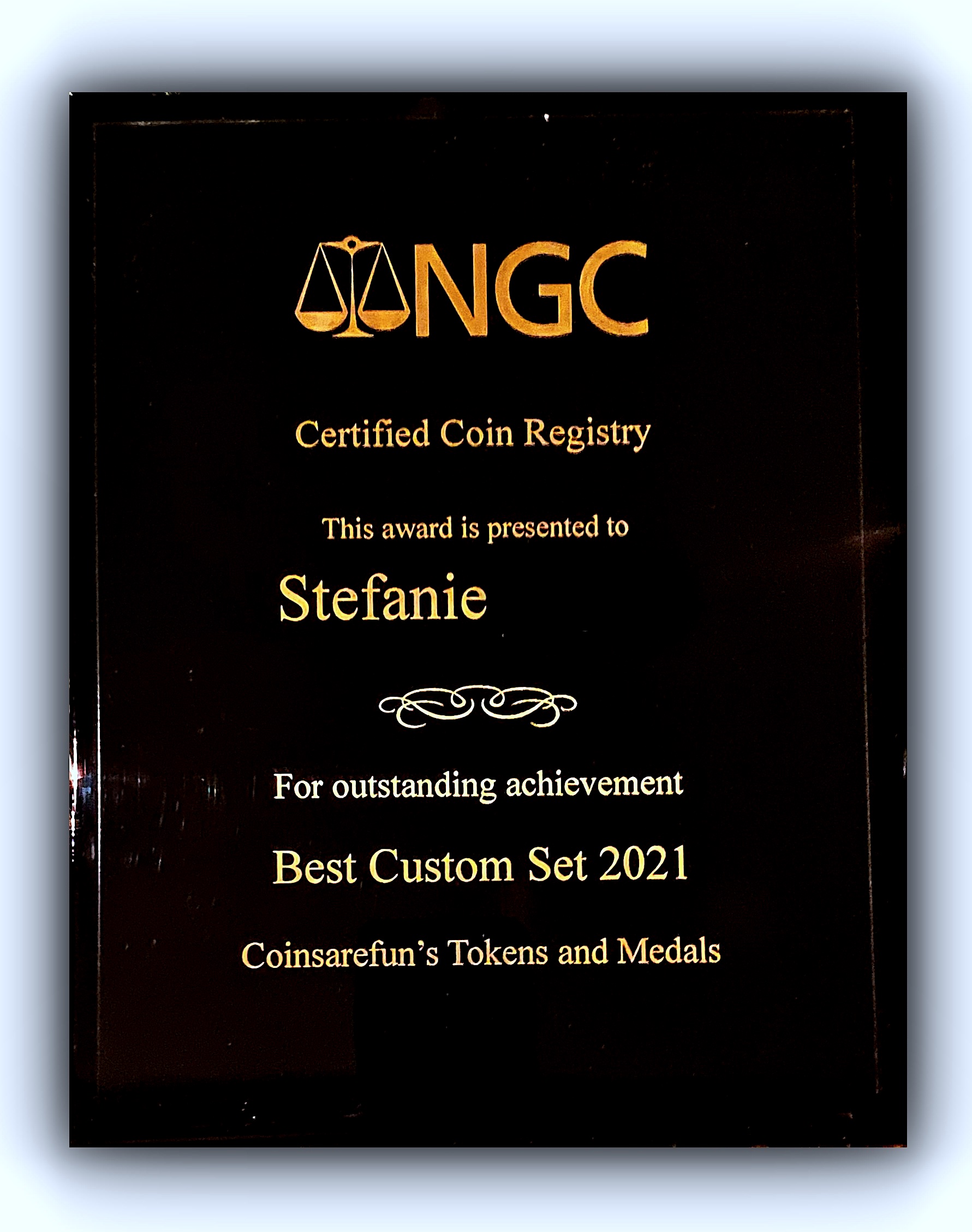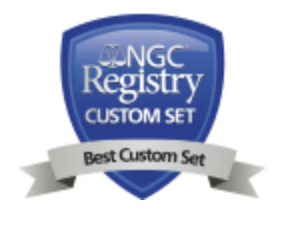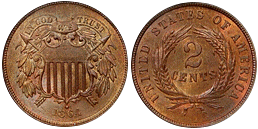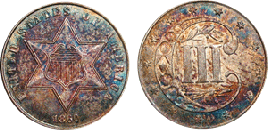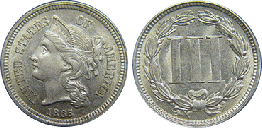| bust half dime 1792 | 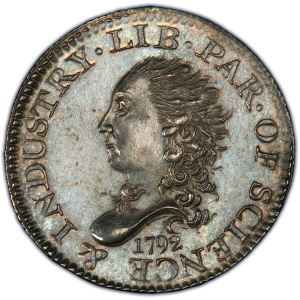 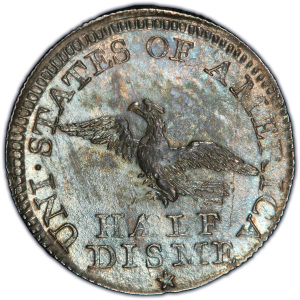 |
| flowing hair half dime 1794-1795 | 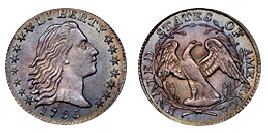 |
| draped bust half dime 1796-1805 | 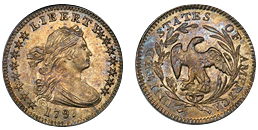 |
| capped bust half dime 1829-1837 | 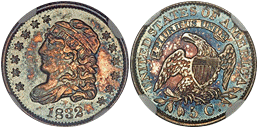 |
| liberty seated half dime 1837-1873 | 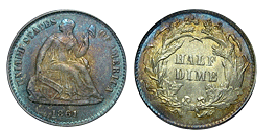 |
| draped bust dime 1796-1807 | 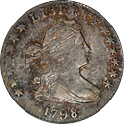 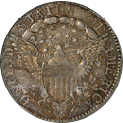 |
| capped bust dime 1809-1837 | 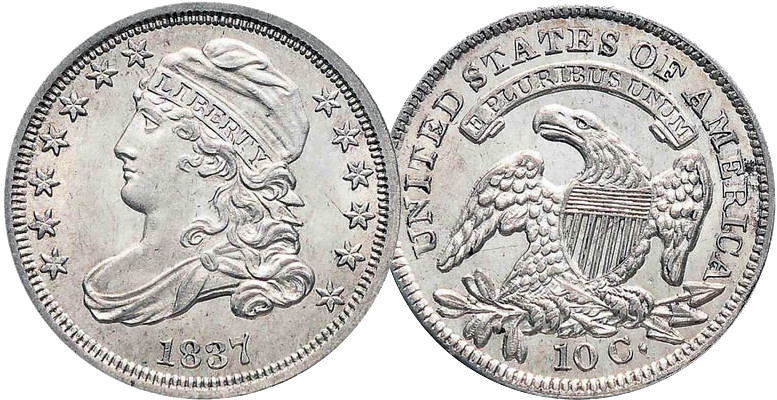 |
| liberty seated dime 1837-1891 | 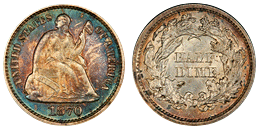 |
| barber dime 1892-1916 | 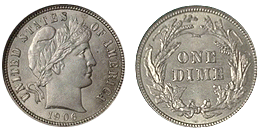 |
| mercury dime 1916-1945 | 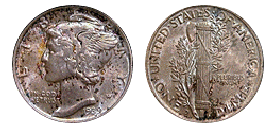 |
| roosevelt dime 1946 to Date | 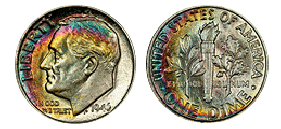 |
| shield nickel 1866-1883 | 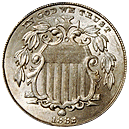 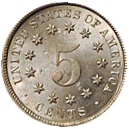 |
| liberty nickel 1883-1913 | 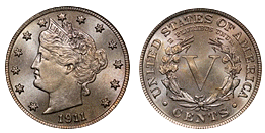 |
| buffalo nickel 1913-1938 | 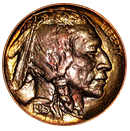 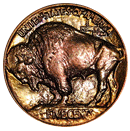 |
| jefferson nickel 1938 to Date | 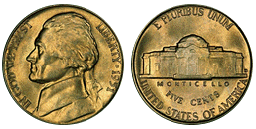 |
Written by:By Bill Jones
All material and images owned by Bill Jones
Recent increases in postage rates remind me of a time in the 19th century when the government decreased the postage rate and issued a new coin to make the purchase of postage stamps easier. In 1851 Congress reduced the postage rate for a letter from five to three cents and authorized a new coin, the silver three-cent piece or “trime,” to facilitate the transition.
Although the mint had been issuing large cents for almost 60 years, the big pennies were never popular and were seldom seen in circulation outside of the big cities. Therefore it was highly unlikely that a customer in rural post office would have had three cents to purchase a stamp, and it was almost equally unlikely that a postal clerk would have had two cents to make change from a Half-dime.
Further complicating situation was the fact that many of the current silver coins were disappearing from circulation. The reason was that the discovery of huge gold deposits in California had upset the ratio between the prices of gold and silver. As a result every United States silver coin contained more precious metal than its face value. This led to widespread hoarding and melting.
The trime was the smallest coin that the United States Government has ever issued. It was also the first U.S. coin that the Government freely admitted contained less precious metal than its face value. Although the trime has larger a diameter than the Type I gold dollar, it weighs less than half as much. In fact the coin is so tiny and so thin that it is almost impossible to lift the piece from a flat surface such as a tabletop. This prompted some people to call these tiny coins “fish scales,” which was a term of derision.
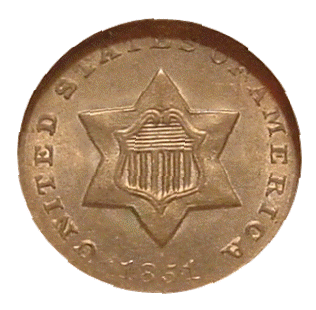
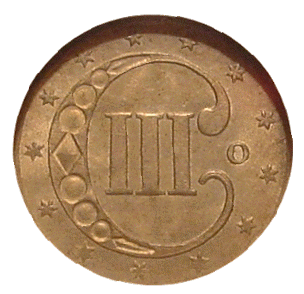
The Type I Trime (1851-3)
The first !rimes appeared in circulation in 1851. The tiny coins were made of a different alloy that consisted of 75% silver and 25% copper.Previously all U.S. silver coins had contained "around" 90% silver and 1 0% copper.
(Note: The earliest U.S. silver coins legally mandated to be 89.24% silver and 10.76% copper. That standard proved to be unworkable and was ultimately changed.)
The small size of the coin required the design to be fairly simple.
The obverse featured a six pointed star with a U.S. shield in the center. This device was surrounded by the legend, "United States of America," with the date at the bottom. The reverse featured a large "C" with the Roman numeral "Ill" in the center. This was surround by 13 stars. Initially the coin was quite popular. and the government issued over 36 million pieces in the first three years.
Today the Type I trime (1851-3) is quite common in well circulated condition. Although most pieces are well struck. many trimes show some weakness down the center of the shield in the middle of the star: and some of the 1851-0 trimes are poorly struck in the date area. The 1851-0 is one of my favorite coins. It was the only three cent piece that was issued by a branch mint, and its mintage of 720,000 pieces was relatively low. Despite those factors the coin has not been a prime collector favorite, and its price is quite reasonable.
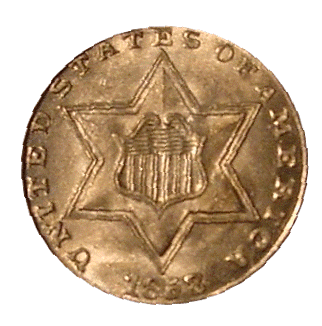
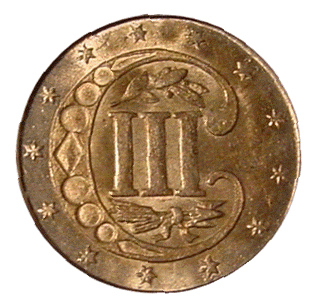
The Type II Trime (1854-B)
In 1854 Congress changed the composition of the trime to the standard 90% silver. 10% copper alloy. Perhaps as a reflection of that change, Chief Mint Engraver, James Longacre. with the approval of the mint director. modified the design of the trime. The modifications included a triple border around the edge of the star on the obverse and the addition of an olive branch above and a bundle of arrows below the Roman numeral "Ill" on the reverse. Perhaps because Longacre had tried to put too much detail on an extremely thin coin. the Type II !rimes are almost never fully struck. Usually parts of the border around the star are missing. and virtually all of the coins show weakness in the center of the shield. Since there were many Type I trimes were already in circulation. the mintage of the Type II pieces was relatively small. In addition far fewer pieces were saved. and today the Type II trime is quite scarce and expensive in Mint State condition. Some pieces also have striation lines across their surfaces because those marks were on the planchets (coin blanks) before the coins were struck and not flattened by the dies. This striation problem is also seen to a greater degree on the rare Type II Proof !rimes. These lines, which result from die polishing, not planchet problems, reduce the eye appeal of these coins considerably.
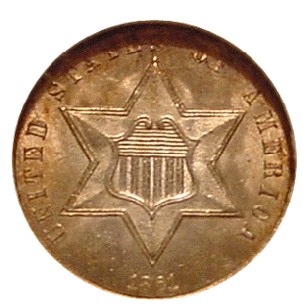
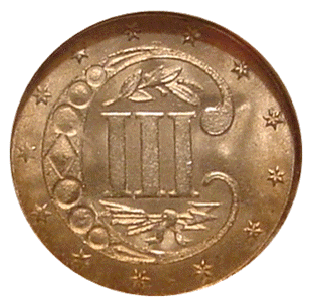
The Type III Trime (1859-73)
In 1859 James Longacre successfully modified the trime design, and the appearance of the coin improved considerably. The Type III trimes had a double border around the outside of the shield and smaller, narrower letters and dates. Those modifications were enough to correct the previous mechanical problems that had plagued the coin.
The Type III trimes were issued in fairly large numbers (almost 1.5 million coins) from 1859 to 1862. By the end of that period the Civil War was in full swing, and the people were hoarding silver coins including the trimes. As a result the mintages for all U.S. silver coins fell to very low levels during the Civil War.
In 1865 the mint introduced the nickel three cent piece. The new coin was larger and easier to handle, which made the trime obsolete. Although the Mint continued to strike a few thousand business strike trimes each year along with several hundred Proof coins, virtually none of the business strike pieces left the government’s vaults. By 1873 the Mint had 74,000 trimes on hand including almost all of the 1863 to 1873 mintage. When Congress ended the mintage of the trime, these coins were melted thus making the few business strike trimes from that period very scarce. Today nearly all of the 1863 to 1873 trimes that are available to collectors are Proof coins. The few remaining Mint State pieces are rarities that sell for higher prices than their Proof counterparts.
| liberty cap half cent 1793-1797 | 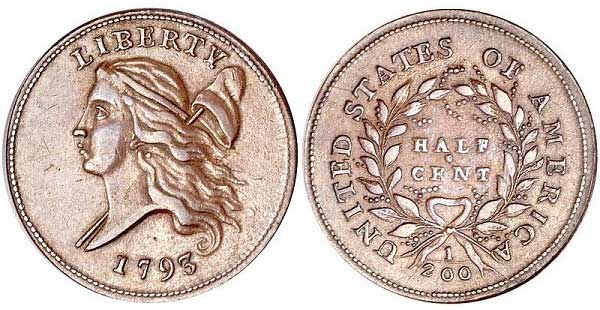 |
| draped bust half cent 1800-1808 | 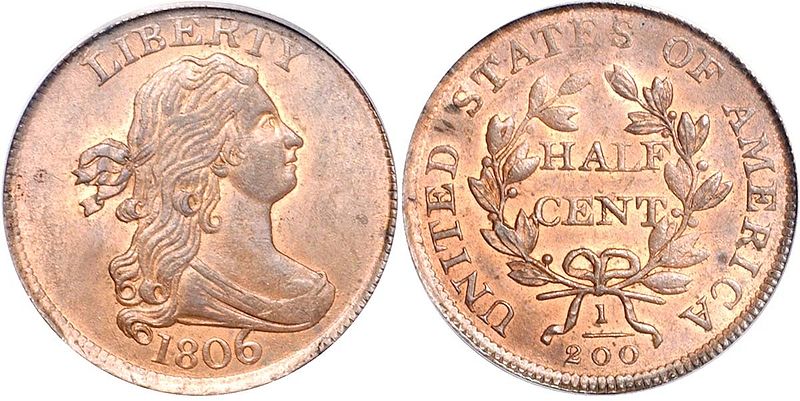 |
| classic head half cent 1809-1836 | 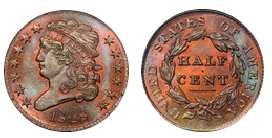 |
| braided hair half cent 1840-1857 | 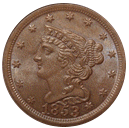 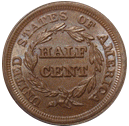 |
| flowing hair large cent 1793-1796 | 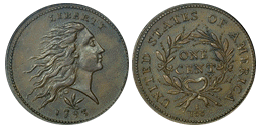 |
| draped bust cent 1796-1807 | 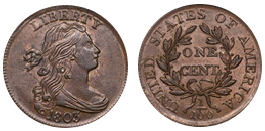 |
| classic head cent 1808-1814 | 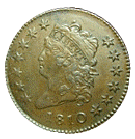 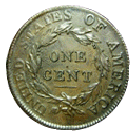 |
| coronet head cent 1816-1839 | 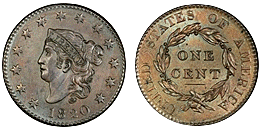 |
| braided hair cent 1839-1857 | 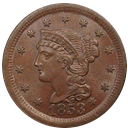 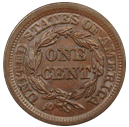 |
| flying eagle cent 1856-1858 | 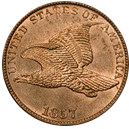 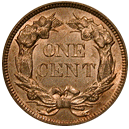 |
| indian cent 1859-1909 | 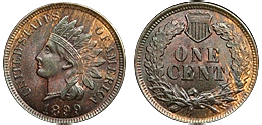 |
| lincoln cent 1909 to Date | 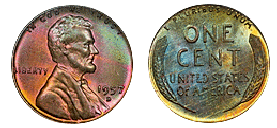 |
Join in the discussion of Colonial Coin Collecting
The Challenge of Colonial Coin Collecting
Written By Mark Aka: Mid Life Crisis
Coins owned by Mid Life Crisis
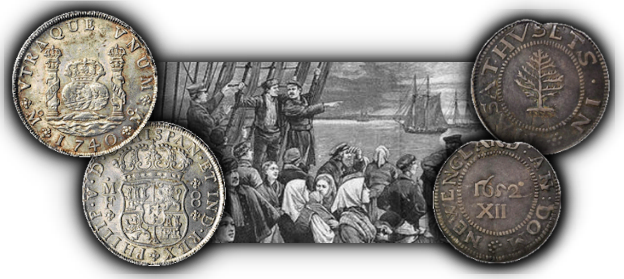
Part I. What is a colonial coin?
I'm sometimes asked "Where can I find a listing of the colonial coins that would be required for a Type set?"
First of all. I wouldn't get too caught up in the debate about what coins are actually colonial. pre-colonial. pre-federal. etc. I use the term "colonial era coins" and collect what I like!
To get a list for a type set. you could start out by using the Redbook. I use the PCGS Early American Coins and Tokens Basic Design Set. which consists of the following coins:
Massachusetts Silver Oak Tree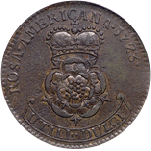
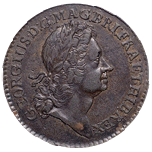 Massachusetts Silver Pine Tree
Massachusetts Silver Pine Tree
Maryland Coinage
New Jersey St. Patrick Coinage
American Plantation Token
Rosa Americana Coinage
Woods Hibernia Coinage
Virginia Coinage
Elephant Token Halfpenny
Higley Copper
Voce Populi Coinage
Pitt Token
Rhode Island Ship Medal
Chalmers Coinage
French Colonies Billon Coinage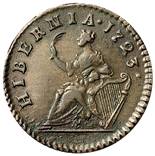
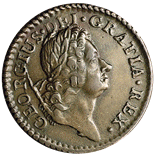
French Colonies Sou 1767
Continental Dollar
Nova Constellatio Copper
lmmunis Columbia
Massachusetts Copper
Connecticut Copper Bust Left
New York Excelsior
Machin·s Mills Copper
Nova Eborac Copper
New Jersey Copper Head Right
Vermont Copper Plow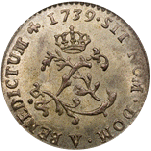
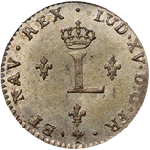
Vermont Copper Bust Right
North American Token
Bar Copper
Auctori Plebis Token
Mott Token
Kentucky Copper
Franklin Press Token
Myddelton Token
Castorland Medal
Talbot Allum & Lee Cent
Washington Triumpho Token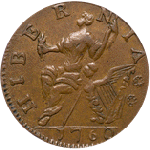
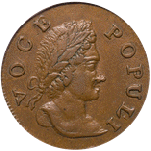
Washington Military Bust
Washington Draped Bust
Washington 1791-95 'Washington President' Obverse
Washington Undated Liberty & Security
Washington Success Medal
Fugio Cent
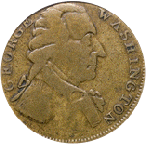
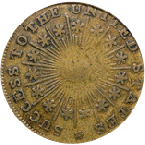
There are many ways to collect colonial era coins. They include:
A limited type set of "mainstream colonials". such as Pine Tree Shillings. Fugio Coppers. Continental Dollars. Nova Constellatio Coppers. etc.
A complete type set covering every series in the Redbook.
An expanded type set of all colonial related issues. including Redbook coins. other circulating world coins and other association pieces.
An in depth focus on one series (such as Talbot. Allum and Lee coins. including all of the mules and all variants. or Pitt related items. including coins. medals and ephemera).
A collection of state coppers by die variety. such as Connecticuts by Miller variety.
Same as the preceding. but also including die states
Same as preceding. but also including unusual and interesting errors. PDVs (painted die varieties). unusually light or heavy coins. etc.
A theme collection. such coins with boats on them.
One of the great things about collecting colonials is that there are countless ways to design your collection.
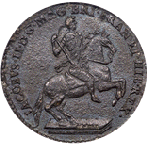
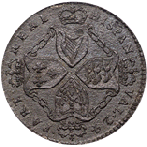
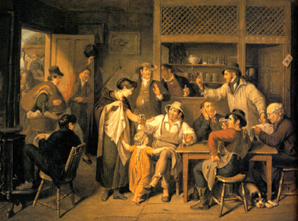
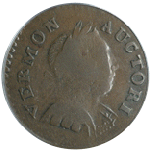
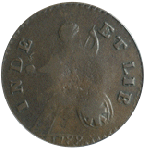
Part II. The Necessary Research
The saying "buy the book before you buy the coin" is old but good. Before you buy any colonial era coins, you should spend a little money on a couple of books and auction catalogs.
Books:
The History of United States Coinage, As Illustrated by the Garrett Collection, by Q. David Bowers.
This book highlights one of the finest collections ever formed and it has extensive information about colonials.
The Early Coins of America, by Sylvester Crosby is a must-have book for colonial collectors.
Whitman Encyclopedia of Colonial and Early American Coins, also by Bowers. This recently published book is an excellent basic reference.
Complete Encyclopedia of US and Colonial Coins, by Walter Breen. Even with its flaws, it's a great reference.
Auction catalogs:
Stack's series of John Ford Sales
John J. Ford’s collection contained over 11,000 coins, tokens, medals and other numismatic items covering all aspects of American numismatics - except regularly issued federal US coinage.
This massive collection was sold by Stack’s in a series of 21 auctions for over $56 million.
Stack's Roper Collection sale
John L. Roper, 2nd, was "a prominent Virginia industrialist and public figure".
He assembled one of the finest collections of colonial era coins ever to come to public auction.
The coins were sold by Stack's in December 1983. According to the auction catalog, the collection contained many fantastic rarities including:
- Six specimens of Sommer Islands coinage, including the extremely rare shilling with large sails, a superb sixpence with small portholes, and a twopence
- Thirty six pieces of Massachusetts silver including the finest known (at the time...maybe still) New England Sixpence
- A complete set of Maryland coinage, including shilling, sixpence, groat (fourpence), and denarium
- A complete set of regular issue Rosa Americana coinage along with a large number of Rosa Americana pattern pieces
- An extremely rare "God Preserve New England" Elephant Token
- A 1714 Gloucester Token (Amazing rarity - 2 or 3 known - and a mysterious and fabulous coin, I think)
- Seven (!) different examples of Higley Copper coinage
- A brass Continental Dollar
- A Standish Barry Silver Threepence
- Two Albany Church Pennies
- Complete set of three Myddelton Token varieties (copper, silver, and COPPER COMPANY OF UPPER CANADA reverse)
Bowers and Ruddy's series of Garrett Collection sales
As noted above, the Garretts formed one of the finest and most extensive coin collections ever.
One of their primary collecting areas was colonial era and other early American coins.
Bower's and Merena's Eliasberg Collection Sale, Part I
In addition to being the only complete collection of federal US coinage ever formed, the Louis Eliasberg collection also contained a limited offering of superb colonial pieces.
Bowers and Merena's series of Norweb Collection sales
Also an extensive collection that contained many major colonial rarities.
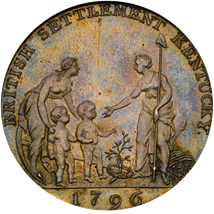
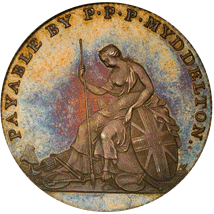
Part III. Tips for Collecting Colonials…and Other Thoughts
Once you've read a bit and feel comfortable buying an inexpensive colonial or two, here are some additional thoughts to keep in mind:
Initially, I recommend that you only buy coins certified and graded by a reputable third party grading service such as PCGS.
You could look for coins in PCGS genuine holders, but I suspect most that you find will be rare and expensive.
So, even though I don't like NGC as much as PCGS for colonials, NGC NCS slabs could be a decent alternative
if you are on a budget but super picky.
In any case, stay away from harshly cleaned coins...but realize that a lot of early copper has been brushed, oiled, lacquered, waxed or otherwise "conserved" and you may be ok with buying those coins.
Personally, I shy away from them and seek out coins that I believe are original...but I recognize that conserving copper has been a widely accepted practice in the hobby for years and there are a lot of nice coins to be found this way.
In my opinion, color and surface quality are the most important aspects of early copper and other colonial era coins.
I prefer a smooth, hard planchet with a nice, even warm color that reminds me of milk chocolate.
For silver, I look for the same attributes in the planchet and I look for dirt between the devices, natural but subtle toning that comes with age...and in all cases, strong eye appeal.
Realize that many colonial varieties come with less than ideal planchets...weak strike, off center, die cracks, dings, discoloration, etc.
In some cases, you may have to just accept this if you want an affordable coin.
Some colonial coins just don't exist in mint state. Some are so rare and popular that they are prohibitively expensive in high grades.
You should study the series and decide what the "optimal collector grade" will be for you...but remember that high grade colonials are very difficult to find!
Colonials are challenging for a lot of reasons. Even after you have a lot of experience with them, you can still make a bad purchase, end up buying a dog, or pay more than you should. Even dealers who are experts in colonials make mistakes...
I know because they've shared those stories with me as teaching points.
Going back to what I've said before, I really think your first big investment should be to obtain as many of the Stack's auction catalogs for the Ford collection as you can, as well as the Stack's auction catalog for the Roper collection and Bowers' catalogs of the Garrett collection. These are great references and you will learn a lot by studying them.
But even Ford, Roper and Garrett - who all had a lot of money and could pick and choose as they liked - each had a few coins in their collection that seem like mistake purchases and are "dogs" compared to the rest of their coins.
It takes some work to become a knowledgeable colonial coin collector.
It takes focus, opportunity, and above all, patience to form a quality collection of colonial era coins.
But colonials are a lot of fun because they are so challenging!
Page 3 of 4


